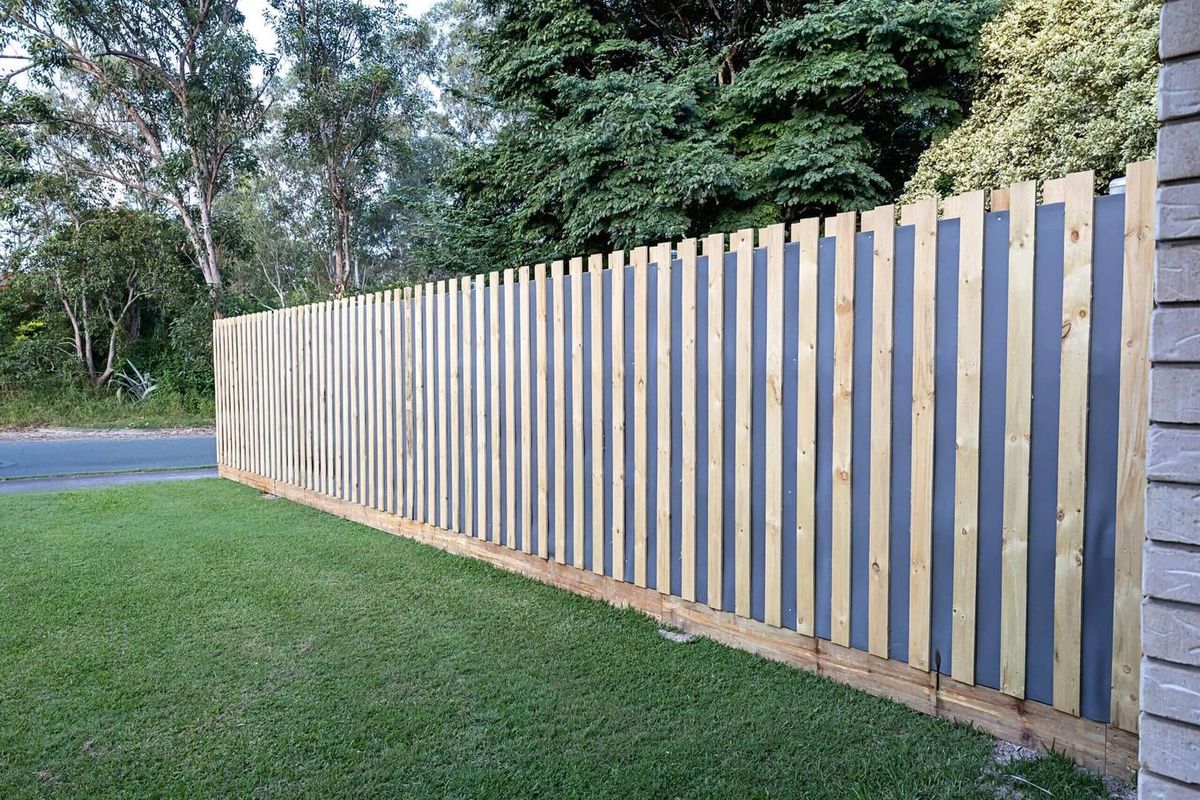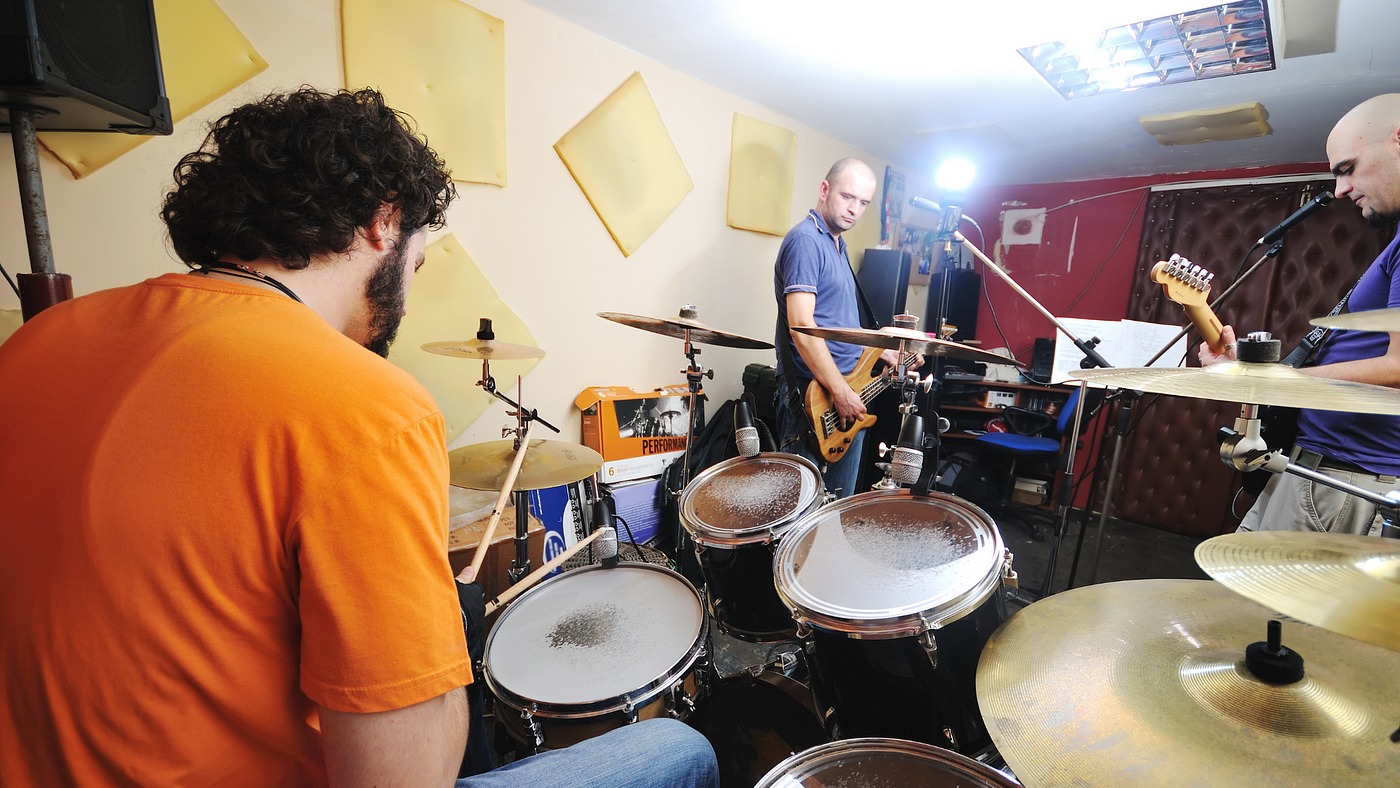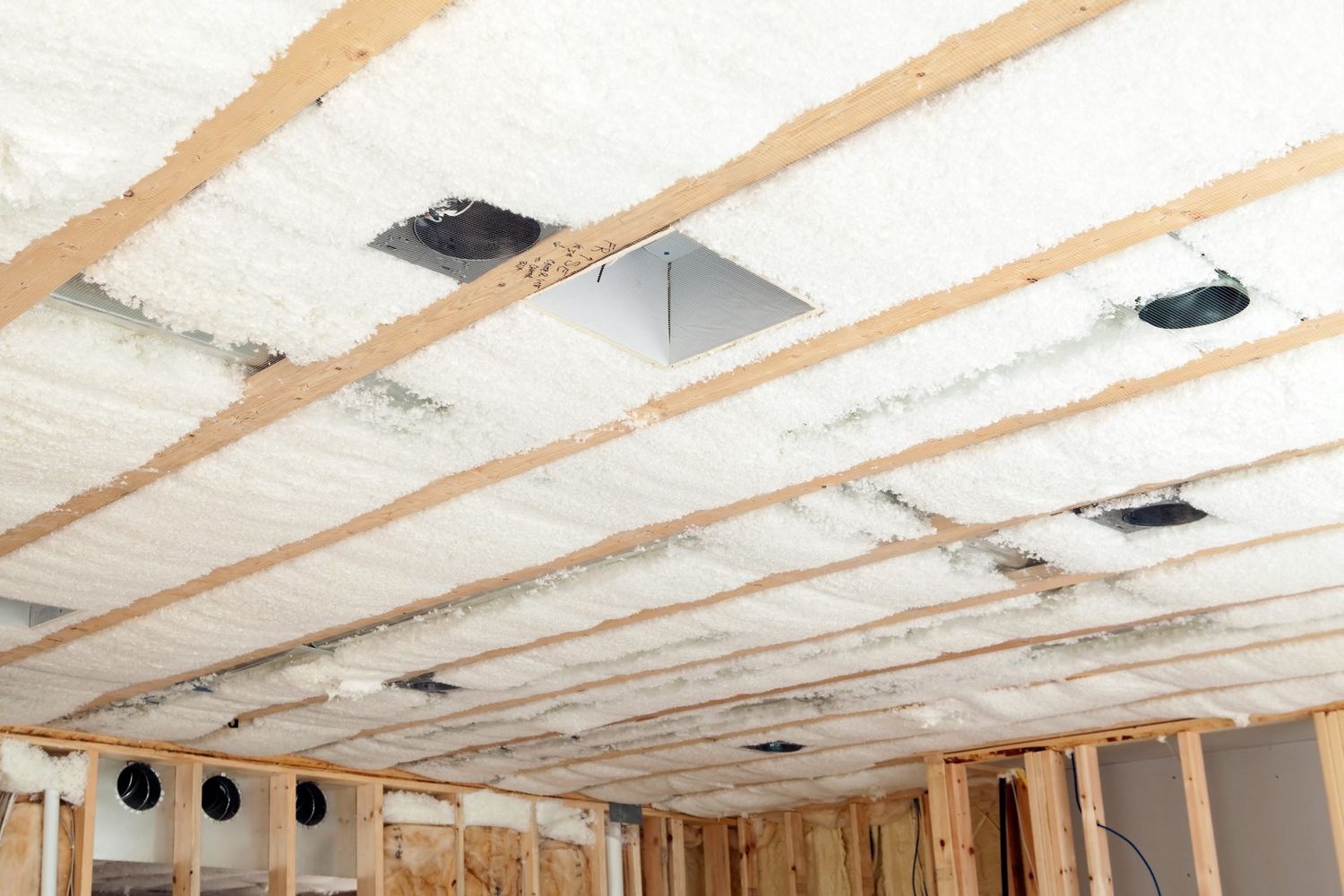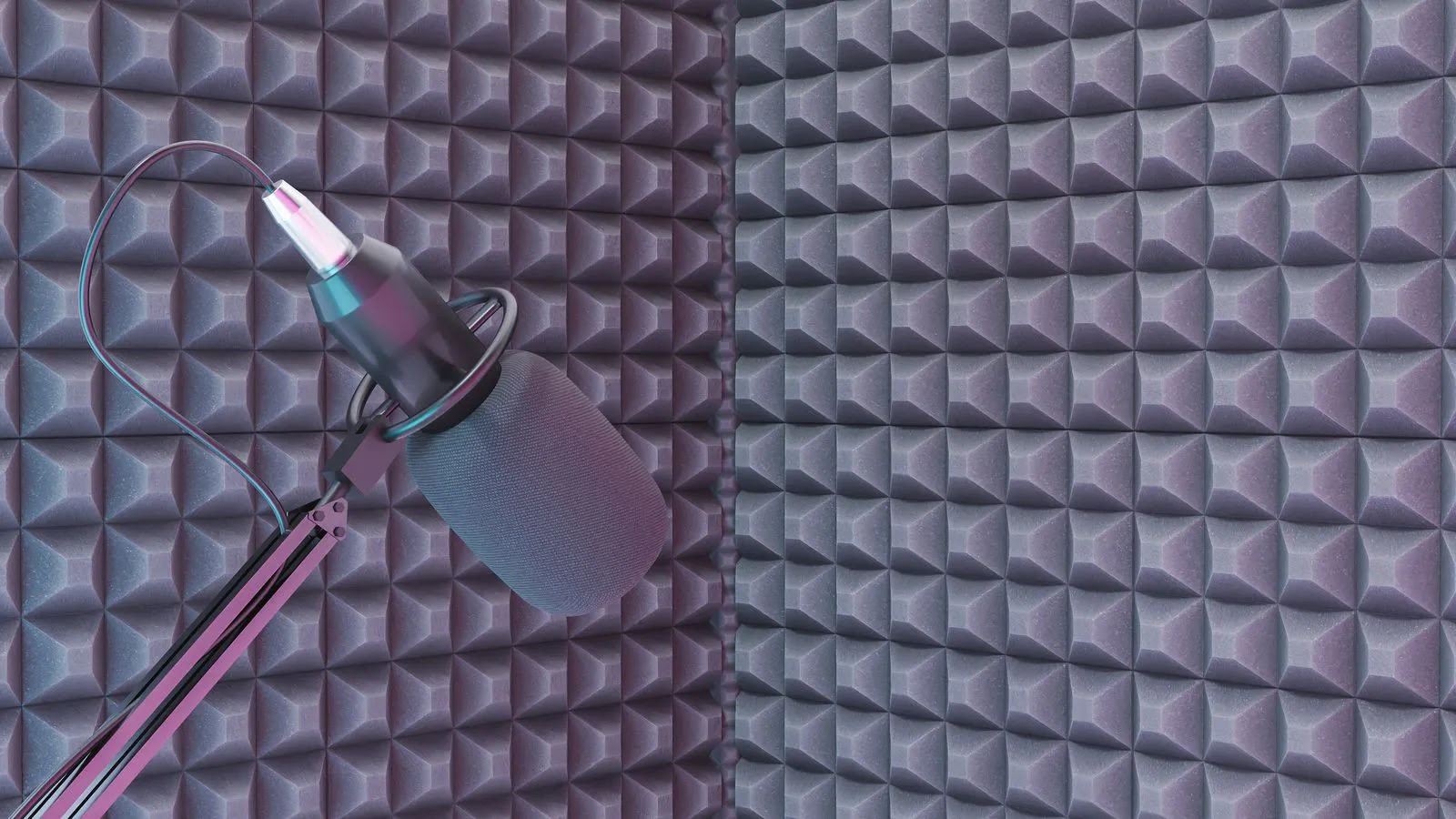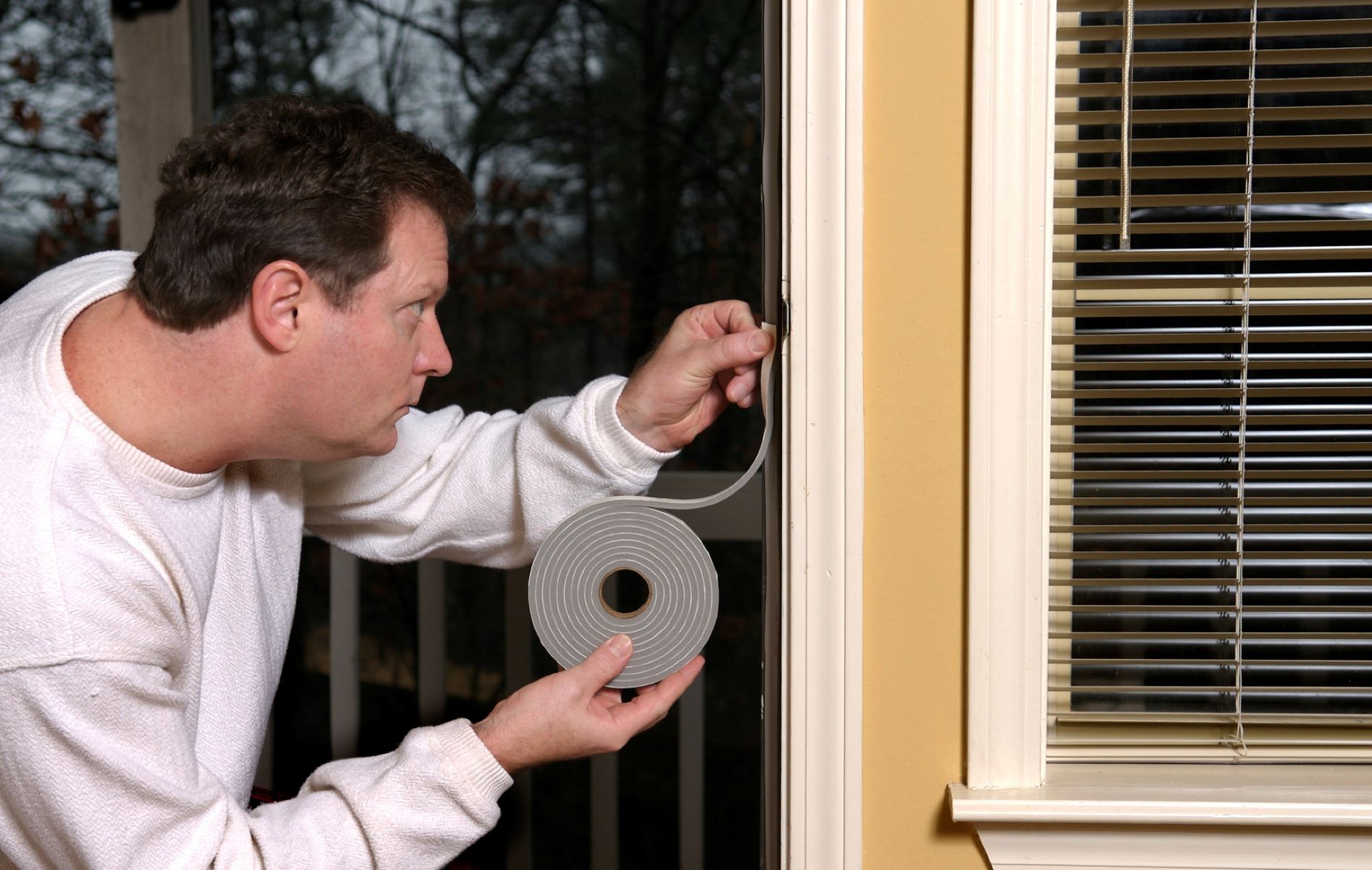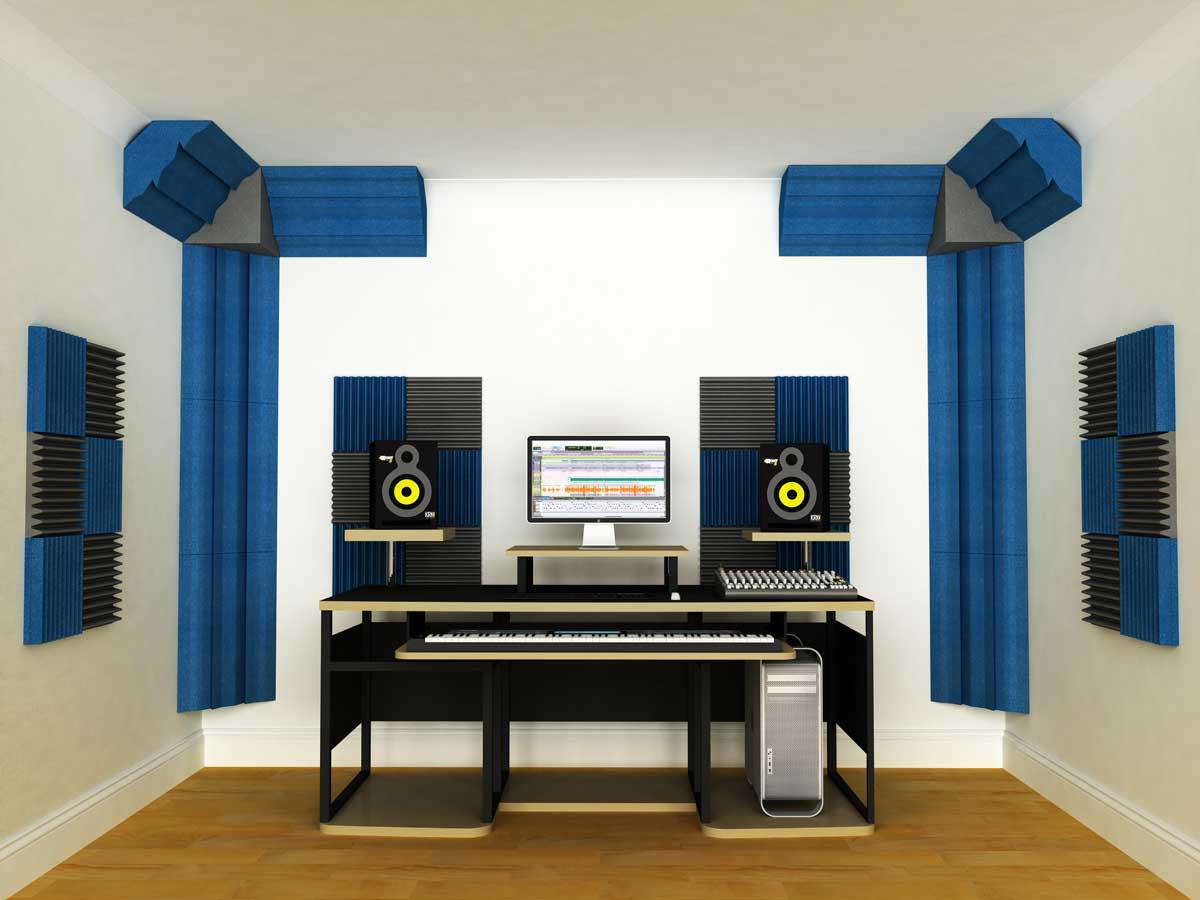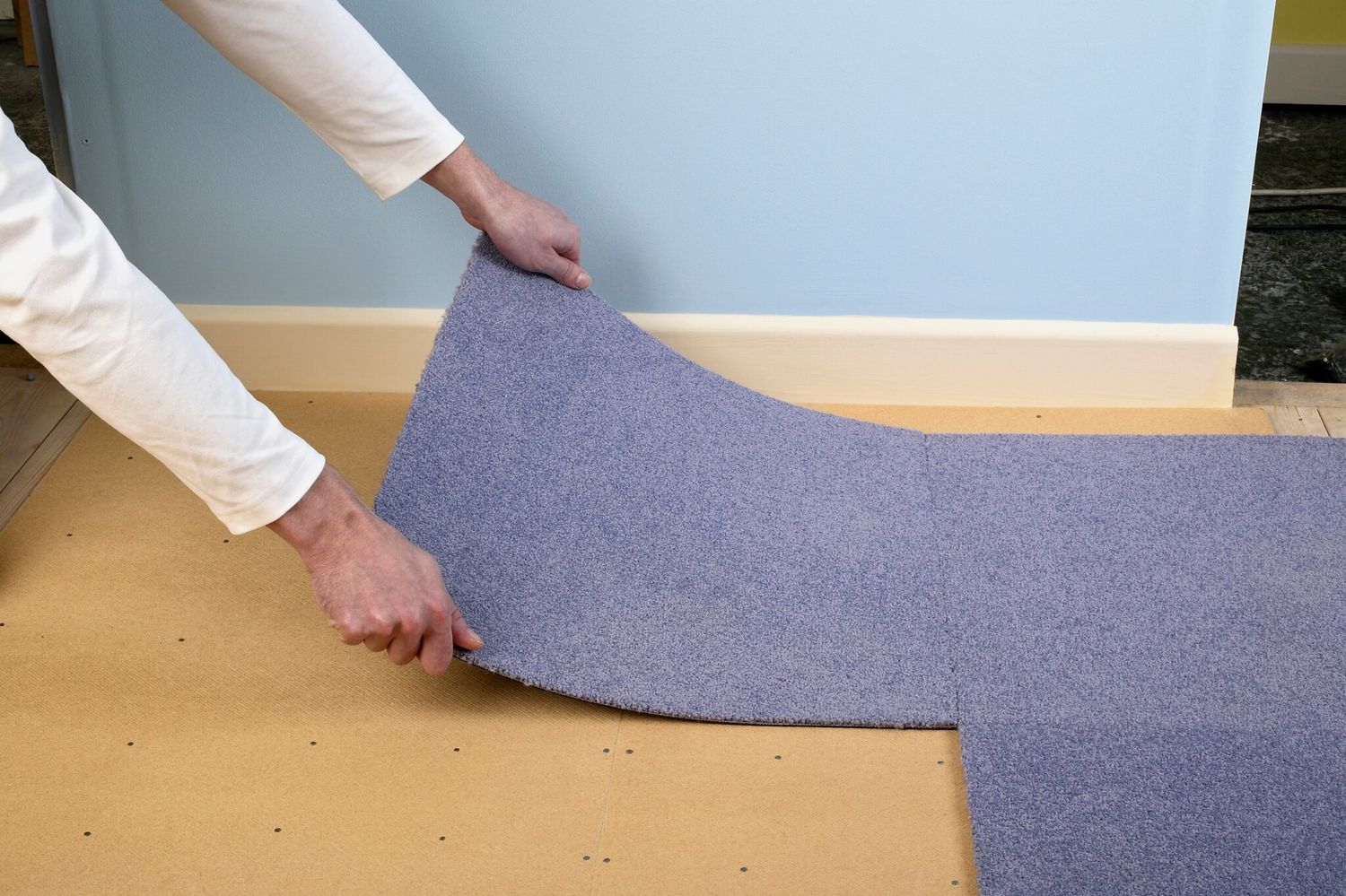Home>Production & Technology>Soundproofing>What Are The Best Materials For Soundproofing
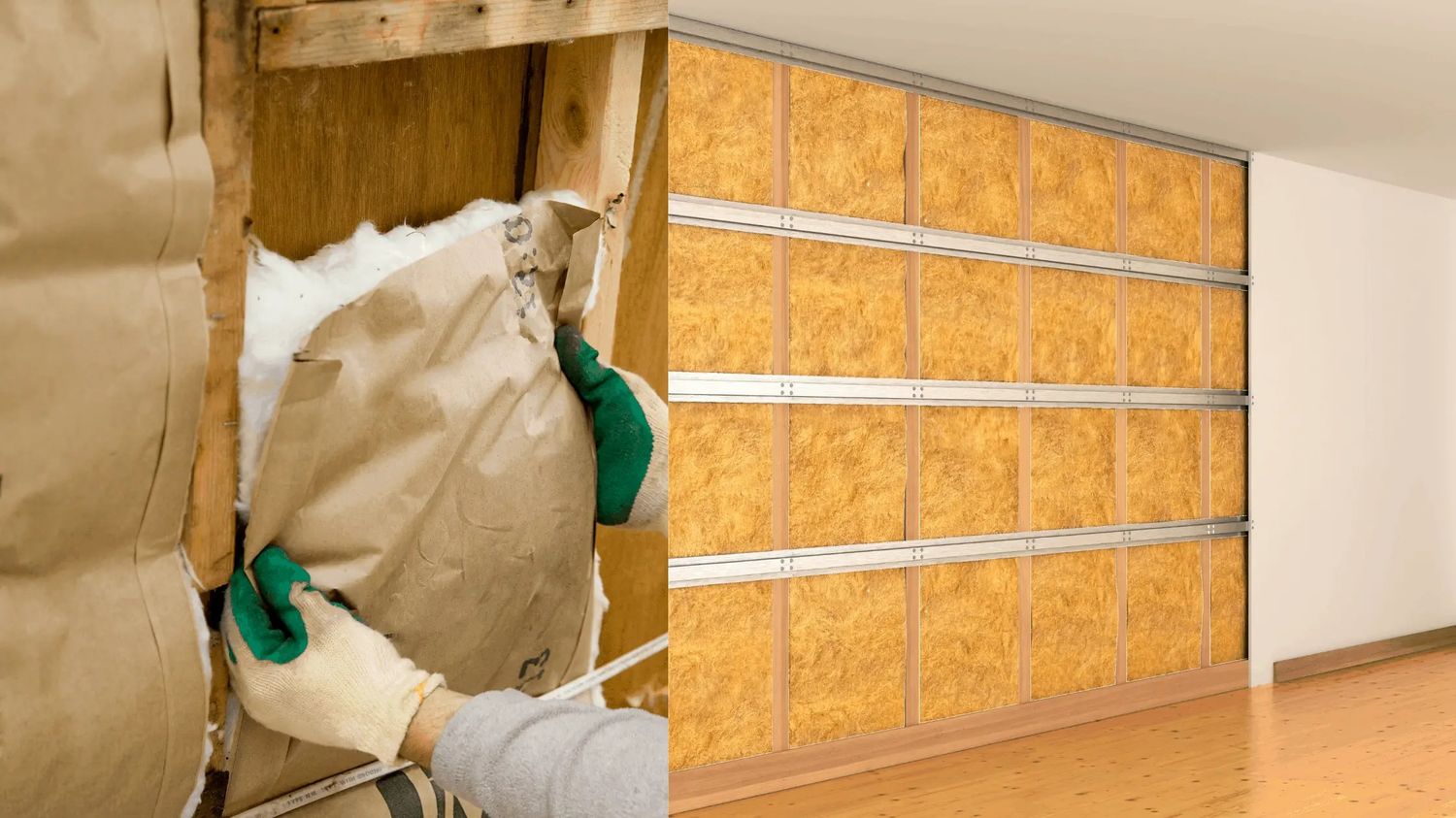

Soundproofing
What Are The Best Materials For Soundproofing
Published: January 26, 2024
Discover the best materials for soundproofing and create a peaceful environment. Get expert advice on soundproofing techniques and enhance your comfort.
(Many of the links in this article redirect to a specific reviewed product. Your purchase of these products through affiliate links helps to generate commission for AudioLover.com, at no extra cost. Learn more)
Table of Contents
Introduction
Soundproofing is a crucial consideration for anyone looking to create a quiet and peaceful environment. Whether you live in a noisy neighborhood, work in a bustling office, or want to reduce noise pollution in your own home, soundproofing can help minimize disturbances and create a more serene atmosphere.
Understanding the basics of soundproofing is essential for effectively implementing the right solutions. By utilizing the right materials, you can significantly reduce the transmission of sound waves and create a more tranquil space.
In this article, we will explore the different types of soundproofing materials available and discuss their effectiveness in blocking unwanted noise. From acoustic foam to soundproof curtains, each material offers unique properties and benefits that cater to various soundproofing needs.
Before diving into the specific materials, it’s important to consider certain factors that can influence the effectiveness of soundproofing. Factors such as the purpose of the space, the level of noise you are dealing with, and your budget will help determine the type of soundproofing material that is most suitable.
Whether you are trying to minimize external noise from entering your home, prevent sound leakage from a home theater, or create privacy in an office setting, soundproofing materials are available to address these needs.
Now, let’s delve into the different types of soundproofing materials and explore their features, advantages, and limitations.
Understanding Soundproofing
Soundproofing is the process of reducing or preventing the transmission of sound waves from one area to another. It involves creating a barrier or implementing materials that absorb, dampen, or block sound waves to minimize noise pollution.
Soundproofing works on the principle of sound waves traveling through air or solid mediums, such as walls, ceilings, or floors. When sound waves encounter these mediums, they can be reflected, absorbed, or transmitted to the other side, resulting in the transmission of sound.
There are two primary methods of soundproofing: adding mass and absorbing sound. Adding mass involves increasing the density and thickness of the barriers to block the sound waves. This method is effective for reducing low-frequency noises, such as traffic or heavy machinery.
Absorbing sound, on the other hand, involves using materials that trap and dissipate sound energy. These materials convert the sound waves into heat energy through friction and vibration. This method is effective for reducing high-frequency noises, such as voices or music.
It’s important to note that achieving complete soundproofing is challenging. Sound can find its way through tiny openings or travel through structural elements, such as pipes or ducts. However, by implementing soundproofing measures, you can significantly reduce the amount of noise that enters or escapes a space.
When considering soundproofing options, it’s essential to understand the Sound Transmission Class (STC) rating. STC is a measurement that indicates the effectiveness of a material or assembly in reducing sound transmission. The higher the STC rating, the better the material is at blocking sound.
In addition to STC ratings, it’s important to evaluate the needs of your specific space. For example, a home theater may require different soundproofing materials compared to a recording studio or an office environment. Assessing the level of noise you are dealing with and the purpose of the space will help you choose the appropriate soundproofing materials and techniques.
Now that we have a better understanding of the concept of soundproofing, let’s explore the different types of soundproofing materials available and their specific benefits.
Factors to Consider
When it comes to soundproofing, several factors should be considered to determine the most suitable materials and techniques for your specific needs. Understanding these factors will help you make informed decisions and achieve the desired level of sound reduction.
1. Purpose of the Space: Determine the primary purpose of the space you want to soundproof. Is it a residential area, office space, recording studio, or home theater? Different spaces have varying soundproofing requirements based on the type and level of noise they need to block.
2. Noise Source: Identify the source of the noise you want to reduce. Is it external noise, such as traffic, construction, or neighbors? Or is it internal noise, like loud appliances, music, or conversations? Understanding the source of the noise will help determine the most effective soundproofing solutions.
3. Budget: Consider your budgetary constraints. Soundproofing materials come in a wide range of prices, so it’s important to establish a budget to guide your choices. Keep in mind that more advanced soundproofing techniques may require higher investments.
4. Building Regulations: Check local building codes and regulations to ensure compliance with any soundproofing requirements. Some areas may have specific standards or restrictions on noise transmission, particularly in multi-family dwellings or commercial spaces.
5. Installation Ease: Consider the level of complexity involved in installing the soundproofing materials. Some materials require professional installation, while others can be easily installed by homeowners. Assess your skill level and determine whether you want to tackle the installation yourself or hire a professional.
6. Aesthetics: Take into account the visual impact of the soundproofing materials. Some materials, like soundproof curtains or acoustic panels, can blend seamlessly with the existing decor. Others, such as soundproofing drywall, may require additional finishing work.
By considering these factors, you can narrow down your choices and select the most appropriate soundproofing materials for your specific requirements. Now, let’s explore the different types of soundproofing materials and their unique characteristics.
Different Types of Soundproofing Materials
There are various soundproofing materials available on the market, each with its own unique properties and benefits. Let’s explore some of the most commonly used types of soundproofing materials:
- Acoustic Foam: Acoustic foam panels are designed to absorb sound waves and reduce echo in a room. They are made from open-cell polyurethane foam and are commonly used in recording studios, home theaters, and offices. Acoustic foam is effective in reducing high-frequency noise, such as voices or music, but may be less effective for blocking low-frequency noise.
- Mass Loaded Vinyl (MLV): MLV is a dense, flexible material that acts as a barrier against sound transmission. It is often used as an additional layer in walls, ceilings, and floors to add mass and block sound waves. MLV is particularly effective in blocking airborne noise and is commonly used in home theaters, recording studios, and apartments.
- Fiberglass Insulation: Fiberglass insulation is a common insulation material that also offers soundproofing properties. It is made of fine glass fibers and can be installed in walls and ceilings to reduce sound transmission. Fiberglass insulation provides both thermal and acoustic insulation, making it a versatile option for soundproofing.
- Green Glue: Green Glue is a specialized damping compound that is applied between layers of building materials, such as drywall. It converts sound energy into heat energy, effectively reducing sound transmission through walls and ceilings. Green Glue is known for its ease of installation and is commonly used in residential and commercial projects.
- Soundproof Curtains: Soundproof curtains are heavy-duty curtains made of dense materials that block out external noise. They incorporate multiple layers, including sound-absorbing materials, to reduce sound transmission. Soundproof curtains are a cost-effective and easy-to-install solution for reducing noise pollution in homes, offices, and recording studios.
- Soundproof Drywall: Soundproof drywall, also known as acoustic drywall, is a specially designed type of drywall with enhanced soundproofing properties. It consists of multiple layers of gypsum and viscoelastic polymers that effectively dampen sound vibrations. Soundproof drywall is commonly used in construction projects where superior soundproofing is desired.
- Soundproofing Paint: Soundproofing paint is a unique type of paint that contains sound-dampening additives. It can be applied to walls, ceilings, and other surfaces to reduce sound transmission. While soundproofing paint alone may not provide significant noise reduction, it can be used in conjunction with other soundproofing materials to enhance their effectiveness.
These are just a few examples of the many soundproofing materials available. It’s important to assess your specific needs and consult with professionals to determine the best combination of materials for your soundproofing project.
Now that we have explored different types of soundproofing materials, let’s conclude our discussion and summarize the key takeaways.
Acoustic Foam
Acoustic foam is a versatile and widely used soundproofing material known for its ability to absorb sound waves and reduce echo in a room. It is made from open-cell polyurethane foam, which has air pockets that trap and dissipate sound energy.
One of the primary advantages of acoustic foam is its effectiveness in reducing high-frequency noise, such as voices, music, or echoes. The foam’s porous structure allows it to absorb sound waves, preventing them from bouncing off hard surfaces and creating reverberation in a room.
Acoustic foam is commonly used in recording studios, home theaters, offices, and other spaces where sound quality and clarity are important. By minimizing echo and reverberation, it helps improve acoustics, making it easier to hear and understand speech, music, or other audio recordings.
Another benefit of acoustic foam is its ease of installation. It can be easily attached to walls, ceilings, or other surfaces using adhesive or mounting hardware. Acoustic foam panels come in various shapes and sizes, allowing for flexibility in design and placement.
While acoustic foam is effective in reducing high-frequency noise, it may be less effective in blocking low-frequency noise. Low-frequency sounds, such as bass or heavy machinery, have longer wavelengths that can pass through the foam more easily. To address low-frequency noise, a combination of materials, such as mass loaded vinyl or soundproof curtains, may be necessary.
It’s important to note that not all acoustic foam is created equal. Different foam densities, thicknesses, and textures can impact its sound-absorbing capabilities. Understanding the specific requirements of your space and consulting with soundproofing professionals can help you choose the right type of acoustic foam for your needs.
In summary, acoustic foam is a popular soundproofing material known for its ability to absorb sound waves and reduce echo. It is easy to install and effective in reducing high-frequency noise. However, it may have limitations in blocking low-frequency noise. When used in conjunction with other soundproofing materials, acoustic foam can help create a more acoustically balanced and enjoyable environment.
Next, let’s explore another type of soundproofing material: Mass Loaded Vinyl (MLV).
Mass Loaded Vinyl (MLV)
Mass Loaded Vinyl (MLV) is a dense and flexible soundproofing material that offers excellent sound blocking and noise reduction capabilities. It is commonly used as an additional layer in walls, ceilings, and floors to add mass and block sound transmission.
One of the key advantages of MLV is its ability to block airborne noise. Its high density and thickness help to impede the transmission of sound waves, making it effective in reducing both airborne and impact noise. MLV is especially useful for blocking noise from outside, such as traffic, construction, or loud neighbors, making it a popular choice for soundproofing homes and offices located in noisy environments.
MLV is made from a blend of minerals, such as barium sulfate, mixed with PVC or vinyl. This combination gives it flexibility, allowing it to be easily installed and shaped to fit different spaces and surfaces. It can be cut with a utility knife and attached using adhesive or nails.
MLV is also known for its fire-resistant properties, making it a safe option for soundproofing applications. It does not emit any toxic fumes when exposed to high temperatures or flames.
While MLV is highly effective in blocking airborne noise, it may not provide the same level of sound absorption as materials like acoustic foam. MLV primarily acts as a barrier to sound transmission, preventing noise from entering or escaping a space. To achieve optimal soundproofing results, combining MLV with other sound-absorbing materials, such as acoustic panels or fiberglass insulation, is recommended.
It’s important to note that MLV can add weight and thickness to walls or ceilings, which may require additional structural support or considerations during installation. Consulting with professionals experienced in soundproofing techniques can help ensure the correct installation and maximize the benefits of MLV.
In summary, Mass Loaded Vinyl (MLV) is a dense and flexible soundproofing material that is effective in blocking airborne noise. It provides an additional barrier to sound transmission and is commonly used in walls, ceilings, and floors. MLV’s ease of installation and fire-resistant properties make it a popular choice for residential and commercial soundproofing projects.
Next, let’s explore another type of soundproofing material: Fiberglass Insulation.
Fiberglass Insulation
Fiberglass insulation is a widely used material for thermal insulation in buildings, but it also offers soundproofing benefits. It is made of fine glass fibers and is effective in reducing both airborne and impact noise.
One of the primary advantages of fiberglass insulation is its ability to absorb sound waves. When sound waves pass through the insulation, the tiny glass fibers trap and convert them into heat energy through friction and vibration. This absorption process helps to minimize noise transmission, making fiberglass insulation an effective soundproofing solution.
Fiberglass insulation is commonly used in walls and ceilings to reduce sound transfer between rooms or floors. It can also be installed in floor cavities to reduce impact noise caused by footsteps or other vibrations.
In addition to soundproofing, fiberglass insulation also provides thermal insulation benefits, helping to regulate temperature and improve energy efficiency in buildings.
When choosing fiberglass insulation for soundproofing purposes, it’s crucial to consider the density and thickness of the material. Higher-density insulation tends to offer better soundproofing performance. Thicker insulation layers can provide increased sound absorption and reduce sound transmission further.
It’s important to note that fiberglass insulation should be installed correctly to achieve optimal soundproofing results. Gaps or poorly insulated areas can compromise its effectiveness. Consulting with professionals or following installation guidelines provided by the manufacturer is recommended to ensure proper installation.
While fiberglass insulation is effective in reducing airborne and impact noise, it may have limitations in blocking low-frequency sounds compared to denser materials like mass loaded vinyl. To address low-frequency noise, combining fiberglass insulation with other soundproofing materials, such as MLV or acoustic panels, can provide a more comprehensive solution.
In summary, fiberglass insulation is a versatile soundproofing material that effectively reduces sound transmission. It offers both thermal and acoustic insulation benefits, making it a popular choice for residential and commercial applications. Selecting the appropriate density and thickness of fiberglass insulation will help achieve the desired level of soundproofing in your space.
Now, let’s move on to explore another type of soundproofing material: Green Glue.
Green Glue
Green Glue is a specialized damping compound that is widely used for soundproofing purposes. It is applied between layers of building materials, such as drywall, to reduce sound transmission through walls and ceilings.
One of the primary benefits of Green Glue is its ability to convert sound energy into heat energy. When sound waves pass through the layers of a wall or ceiling treated with Green Glue, the compound’s viscoelastic properties cause it to dampen the vibrations created by the sound waves, effectively reducing noise transmission.
Green Glue is easy to apply, typically in the form of a viscous liquid. It can be applied using a caulk gun or manually spread between layers of drywall or other building materials. Once applied, it dries into a flexible and sound-dampening layer.
Using Green Glue in soundproofing projects offers several advantages. It is known for its effectiveness in reducing both airborne and impact noise. It is particularly useful for reducing low-frequency sounds, which can be challenging to address with other soundproofing materials.
Another advantage of Green Glue is its ease of installation and versatility. It can be applied during new construction or renovation projects. It can also be used in combination with other soundproofing materials, such as acoustic foam or mass loaded vinyl, to further enhance soundproofing performance.
It’s important to note that Green Glue is a comparatively more expensive soundproofing material. However, its effectiveness and ease of use make it a preferred choice for those seeking professional-grade soundproofing.
When using Green Glue, it’s crucial to follow the manufacturer’s instructions for proper application and drying times. This will ensure that the compound reaches its maximum sound-damping effectiveness.
In summary, Green Glue is a specialized damping compound used for soundproofing walls and ceilings. Its viscoelastic properties effectively reduce sound transmission by converting sound energy into heat energy. Green Glue is easy to apply and offers versatility in soundproofing applications. Although it may have a higher cost, its effectiveness, particularly in reducing low-frequency noise, makes it a popular choice for soundproofing projects.
Now, let’s move on to another type of soundproofing material: soundproof curtains.
Soundproof Curtains
Soundproof curtains, also known as acoustic curtains or noise-reducing curtains, are a popular and practical solution for soundproofing windows and doors. These heavy-duty curtains are designed to block out external noise and create a quieter and more peaceful indoor environment.
Soundproof curtains consist of multiple layers of dense and sound-absorbing materials, such as mass-loaded vinyl, fiberglass, and sound-dampening foams. These layers help to trap and absorb sound waves, reducing their transmission into the room.
One of the key advantages of soundproof curtains is their ease of use. They can be easily installed and removed, making them a convenient solution for temporary soundproofing needs or rented spaces. They often come with hooks or grommets for easy attachment to curtain rods or tracks.
In addition to their soundproofing properties, these curtains also offer other benefits. They can help regulate temperature and improve energy efficiency by reducing heat gain or loss through windows. They also block out light, making them ideal for bedrooms or spaces where light control is important.
Soundproof curtains are effective in reducing both high-frequency and some low-frequency noises, such as traffic sounds, construction noise, or general street clamor. However, it’s important to note that their effectiveness may vary depending on the specific noise source and curtain quality.
When choosing soundproof curtains, consider the curtain’s thickness, density, and coverage area. Thicker and heavier curtains generally provide better soundproofing performance. Look for curtains with a high Sound Transmission Class (STC) rating, which indicates their ability to block sound.
It’s important to keep in mind that soundproof curtains are most effective when they completely cover the window or door opening and create a seal around the edges. Any gaps or openings can allow sound to leak through, reducing their overall effectiveness.
Soundproof curtains are a cost-effective and versatile solution for reducing external noise in various environments. Whether you live in a noisy neighborhood, have noisy neighbors, or want to create a quieter work or study space, soundproof curtains can significantly improve the acoustic quality of the room.
Now that we’ve explored soundproof curtains, let’s move on to discuss another type of soundproofing material: soundproof drywall.
Soundproof Drywall
Soundproof drywall, also known as acoustic drywall or sound-damping drywall, is a specialized type of drywall that is designed to enhance soundproofing capabilities in walls and ceilings. It consists of multiple layers of gypsum and viscoelastic polymers, which effectively dampen sound vibrations and reduce noise transmission.
One of the main advantages of soundproof drywall is its ability to block both airborne and impact noise. The viscoelastic polymers embedded within the drywall convert sound energy into heat energy, reducing sound vibrations and minimizing noise transfer between rooms or floors.
Soundproof drywall is often used in construction or renovation projects where superior soundproofing is desired. It is commonly employed in areas such as home theaters, recording studios, bedrooms, or any space where noise control is essential.
In addition to its soundproofing properties, soundproof drywall maintains the same installation and finishing process as regular drywall, making it relatively easy to work with for professionals and experienced DIY enthusiasts.
It’s important to note that while soundproof drywall can significantly reduce noise transmission, it may not be sufficient on its own to achieve complete sound isolation. Combining soundproof drywall with other soundproofing materials, such as acoustic foam or mass loaded vinyl, can enhance its effectiveness and provide a more comprehensive soundproofing solution.
When selecting soundproof drywall, consider its thickness and density. Thicker and denser drywall generally offers better soundproofing performance. It’s also crucial to ensure proper installation, including sealing any gaps or seams between panels to prevent sound leakage.
While soundproof drywall may have a higher cost compared to traditional drywall, its ability to significantly reduce noise transmission makes it a worthwhile investment for those seeking enhanced soundproofing in their spaces.
In summary, soundproof drywall is a specialized type of drywall that provides superior soundproofing capabilities. It effectively dampens sound vibrations and reduces noise transmission between rooms or floors. Combining soundproof drywall with other soundproofing materials can further enhance its effectiveness. If noise control is a priority, soundproof drywall is a valuable solution.
Now, let’s explore the final type of soundproofing material: soundproofing paint.
Soundproofing Paint
Soundproofing paint, also known as acoustic paint or noise-reducing paint, is a unique type of paint that contains sound-dampening additives. While it may not provide the same level of soundproofing as other materials like drywall or acoustic panels, it can contribute to reducing noise transmission in certain scenarios.
Soundproofing paint works by adding density and mass to surfaces, which helps to absorb sound waves and reduce their reflection. The paint contains materials such as ceramic microspheres or sound-absorbing fibers that enhance its sound-dampening properties.
One of the advantages of soundproofing paint is its ease of application. It can be directly applied to walls, ceilings, or other surfaces using standard painting techniques. This makes it a convenient option for those looking for a simpler soundproofing solution.
Soundproofing paint is often used in combination with other soundproofing materials, such as drywall or acoustic panels, to further enhance soundproofing performance. It can be applied as an additional layer on top of existing soundproofing measures to improve their effectiveness.
While soundproofing paint can help reduce noise levels, it’s essential to manage expectations. Its effectiveness may vary depending on the specific noise source and the thickness of the applied paint. In general, soundproofing paint is more effective in reducing high-frequency noise, such as voices or music, compared to low-frequency noise.
It’s important to note that soundproofing paint alone may not be sufficient for achieving significant noise reduction, especially in environments with high noise levels. It is best utilized as part of a comprehensive soundproofing strategy that includes other materials and techniques tailored to the specific needs of the space.
In summary, soundproofing paint is a convenient option for adding an additional layer of sound-dampening to surfaces. While it may not provide the same level of soundproofing as other materials, it can contribute to reducing noise transmission, particularly in high-frequency ranges. When used in conjunction with other soundproofing measures, soundproofing paint can enhance overall soundproofing effectiveness.
Now that we have explored soundproofing paint, let’s summarize the key points and conclude our discussion on soundproofing materials.
Conclusion
Soundproofing materials offer valuable solutions for reducing noise transmission and creating quieter environments. Understanding the different types of soundproofing materials available can help you choose the most suitable options for your specific needs.
From acoustic foam to soundproof curtains, each material offers unique advantages and limitations. Acoustic foam is effective in absorbing high-frequency noise, while mass loaded vinyl (MLV) provides excellent blocking capabilities. Fiberglass insulation offers both thermal and soundproofing benefits, while Green Glue converts sound energy into heat energy. Soundproof curtains are versatile and easy to install, while soundproof drywall provides superior sound dampening. Soundproofing paint can add an additional layer of sound absorption but is best used in conjunction with other materials.
When choosing soundproofing materials, consider factors such as the purpose of the space, the level of noise you are dealing with, your budget, and any building regulations. Each space is unique, and understanding these factors will help you make informed decisions and achieve the desired level of sound reduction.
Remember, achieving complete soundproofing is challenging, and a combination of materials and techniques may be necessary to achieve the best results. Consulting with professionals in the field can provide valuable insights and ensure the proper installation of soundproofing materials.
By implementing the right soundproofing materials, you can create a more peaceful and comfortable environment, free from unwanted noise disturbances. Whether you want to minimize external noise, prevent sound leakage, or enhance the acoustics of a space, soundproofing materials offer effective solutions.
So, take the time to assess your needs, explore the options available, and invest in the appropriate soundproofing materials to enjoy a quieter and more harmonious living or working environment.

